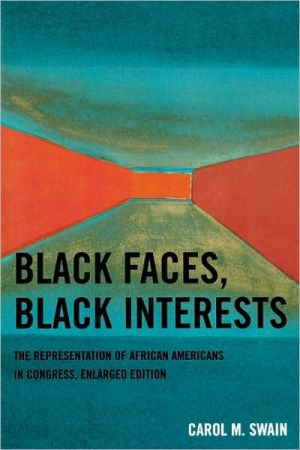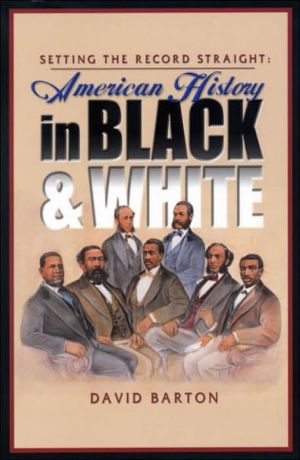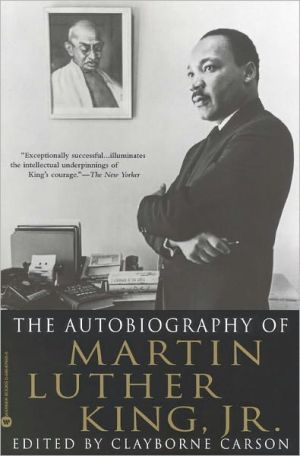Black Faces, Black Interests
Winner of the Woodrow Wilson Foundation Award from the American Political Science Association; the D.B. Hardeman Prize for the best scholarly work on Congress from the Lyndon Baines Johnson Foundation; and co-winner of the V.O. Key Award from the Southern Political Science Association; Selected by Library Choice Journal as one of seven "Outstanding Academic Books of 1994" Through analysis of both black and white members of Congress, Black Faces, Black Interests challenges the proposition that...
Search in google:
Presented here in an enlarged edition, Black Faces, Black Interests presents persuasive evidence that challenges the notion that only African Americans can represent black interests effectively in Congress. This pivotal work argues for black and white representatives to form coalitions to better serve their constituents.Library JournalThis study by Swain, an African American political scientist at Princeton University, is invaluable because it works on several levels. For those interested in black politics, her book presents insights into the activities of black congressional representatives on the Hill and in their districts. In this context, it is much like William L. Clay's Just Permanent Interests ( LJ 2/1/93). But while Clay's book tends to be impressionistic and anecdotal, Swain utilizes the methods of social science, including interviews, field observations, and analysis of voting records. However, Swain also attempts to solve the riddle of whether black interests are adequately represented and who can best represent them. She compares the behavior of black and white representatives serving historically black, newly created black, and heterogeneous districts and also considers blacks who serve majority-white districts. Her major conclusions, among them that whites can effectively represent black interests and that blacks must form coalitions with white representatives to serve black needs, will surprise many, for they challenge a number of prevailing assumptions about the appropriate ways of representing black interests. Strongly recommended for academic and large public political science collections.-- Thomas J. Baldino, Wilkes Univ., Wilkes-Barre, Pa.
PrefaceIThe Context1The Representation of Black Interests in Congress3What Is Representation?5What Are Black Interests?5Who Supports the Interests of Blacks on Capitol Hill?132Tracing the Footsteps of Blacks on the Hill20The Reconstruction Era21The Twentieth Century29IIBlack Representatives3Black Representatives of Historically Black Districts47The Thirteenth District of Michigan: George Crockett49The Second District of Pennsylvania: William Gray III59Historically Black Districts and Electoral Security724Black Representatives of Newly Black Districts74The Second District of Mississippi: Mike Espy75The Fifth District of Georgia: John Lewis89Newly Black Districts and the Need for Biracial Coalitions975Black Representatives of Heterogeneous Districts98The Thirty-First District of California: Mervyn Dymally99The Sixth District of New York: Floyd Flake108What Are the Constraints of Heterogeneous Districts?1156Black Representatives of Majority-White Districts116The Fifth District of Missouri: Alan Wheat116The First District of Indiana: Katie Hall127The Eighth District of California: Ron Dellums133The Potential for Electing More Black Representatives in White Districts140IIIWhite Representatives7White Representatives of Minority-Black Districts145The Sixth District of South Carolina: Robin Tallon147The Second District of North Carolina: Tim Valentine159A Delicate Balancing Act: Southern White Representation of African Americans1688White Representatives of Majority-Black Districts170The Second District of Louisiana: Lindy (Corinne) Boggs171The Tenth District of New Jersey: Peter Rodino, Jr.179An Extinct Group188IVImplications9Strategies for Increasing Black Representation of Blacks193Factors Influencing Black Political Gains in Congress193Racial Gerrymandering197Why Question the Strategy?200Black Representation and the Republican Party20510The Future of Black Congressional Representation207Preconditions of Increased Black Representation207The Special Characteristics of Black Representatives217What Lies Ahead?222Appendix A. Research Methods227Appendix B. Campaign Finance, 1980-1990232Appendix C. Legislative Records of All Black Representatives, 100th Congress234Notes237Index267
\ Political Science Quarterly[Swain's] book offers a critical counterpoint to the traditional arguments of voting rights advocates.\ \ \ \ \ Peter SchuckSwain's analysis of a pivotal empirical issue—the representational effects of racial gerrymandering that assures safe seats to black politicians—is essential reading for citizens concerned about the future of voting rights policies.\ \ \ Linda FowlerSwain's book challenged conventional wisdom about race and representation a decade ago and remains as provocative now as it was then.\ \ \ \ \ Library JournalThis study by Swain, an African American political scientist at Princeton University, is invaluable because it works on several levels. For those interested in black politics, her book presents insights into the activities of black congressional representatives on the Hill and in their districts. In this context, it is much like William L. Clay's Just Permanent Interests ( LJ 2/1/93). But while Clay's book tends to be impressionistic and anecdotal, Swain utilizes the methods of social science, including interviews, field observations, and analysis of voting records. However, Swain also attempts to solve the riddle of whether black interests are adequately represented and who can best represent them. She compares the behavior of black and white representatives serving historically black, newly created black, and heterogeneous districts and also considers blacks who serve majority-white districts. Her major conclusions, among them that whites can effectively represent black interests and that blacks must form coalitions with white representatives to serve black needs, will surprise many, for they challenge a number of prevailing assumptions about the appropriate ways of representing black interests. Strongly recommended for academic and large public political science collections.-- Thomas J. Baldino, Wilkes Univ., Wilkes-Barre, Pa.\ \ \ \ \ BooknewsSwain (politics and public affairs, Woodrow Wilson School, Princeton U.) examines the problems of representing the interests of African- Americans by studying the constituency relations and roll-call voting of black members of Congress from a variety of districts--historically black, newly black, heterogeneous, and primarily white--and of white members from districts with either a black majority or a significant black minority. Annotation c. Book News, Inc., Portland, OR (booknews.com)\ \








